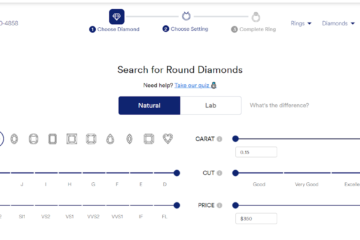Because of its rejuvenating effects on the skin, reduction of wrinkles, and improvement of skin texture overall, fraxel laser treatments have grown in popularity. But you should know what to expect and what the process entails before opting to get this done.
Before undergoing Fraxel laser treatment, please read this article first so you are aware of the key aspects of this skin procedure.
What is Fraxel Laser?
Fraxel is a fractional laser treatment that uses tiny laser columns to target sun-damaged and aging skin without invasive surgery. These columns boost collagen formation and the skin’s innate healing abilities by penetrating deeply into the skin.
By addressing a small area of skin at a time, the therapy can improve the skin’s tone, look, and texture while also facilitating speedier recovery.
Key Factors to Know About Fraxel Laser
The process of the Fraxel laser is quite interesting, but is it the right procedure for your skin? Here are the essential factors you should know to find out if you want to undergo this skin treatment:
1. Different Types of Fraxel Lasers
Different Fraxel lasers are available to treat different skin issues. There are mostly two kinds:
- Fraxel re:store: Skin imperfections like fine wrinkles, pigmentation, and sun damage are treated mildly to moderately with this non-ablative laser. Minimal downtime is required.
- Fraxel re:pair: When dealing with serious skin problems like deep wrinkles or extensive sun damage, this ablative laser is the way to go because of its intensity. It takes more time to recover, but the results are worth it.
When you know what to look for in a skincare laser, you can choose the best one for your needs.
2. Consider Your Skin Type and Condition
You should talk to a dermatologist to find out if Fraxel laser treatments are right for your skin type; nevertheless, the procedures are typically safe for all skin types. Before getting Fraxel laser treatment, those with certain skin concerns, such as aggressive acne or eczema, may need to take steps to clear them up.
3. Consultation Process
Before undergoing Fraxel laser therapy, it is essential to have a comprehensive consultation with an experienced cosmetic surgeon or dermatologist. Your dermatologist will assess your skin type, medical history, and other concerns during this appointment. With this information, they can better tailor a treatment regimen to your skin’s specific requirements.
4. Pre-Treatment Preparation
To get the most out of your Fraxel laser treatment, your dermatologist may advise you to stay out of the sun and use certain skincare products. You may be asked to discontinue the use of specific skincare products or medications if they are known to aggravate skin sensitivity.
For optimal outcomes with minimal side effects, it is essential to adhere to any pre-treatment advice given.
5. The Procedure and What to Expect
After a thorough cleansing, your skin may be prepared for the Fraxel laser therapy by applying a topical anesthetic. The next step is to run the laser device over your skin so it can precisely target certain spots. Depending on the treated area, the operation can take anywhere from twenty to forty-five minutes.
6. Post-Treatment Care
A sunburn-like reddening and swelling of the skin may occur after the therapy. Important post-treatment care advice may include using calming lotions, staying out of the sun, and drinking enough water. Although everyone heals at their own pace, it usually only takes a few weeks for most people to notice a marked difference.
7. Potential Side Effects and Risks
Redness, swelling, irritation, and transient changes in skin tone are among the possible adverse effects of Fraxel laser treatments, although the procedure is typically well-tolerated. Scarring or infection are more serious adverse effects that can happen in extremely rare instances. To make a well-informed choice, talk to your dermatologist about these risks.
8. Number of Sessions Needed
The severity of the skin issue determines the number of Fraxel laser sessions that are necessary. For best effects, it is usually advised to do a series of three to five treatments, with a few weeks in between each. A personalized treatment plan will be devised by your dermatologist.
9. Cost and Investment
Costs for Fraxel laser treatments can add up quickly; factors like treatment area, number of sessions needed, and laser type all play a role. Think about this investment and set aside money for it. To make medical care more accessible, several clinics provide payment options.
Your Path to Radiant Skin
Being well-informed is vital before undergoing Fraxel laser treatments, which offer considerable benefits for skin renewal. To ensure a successful Fraxel laser treatment, it is essential to consult with a skilled specialist and follow all pre- and post-treatment care instructions. If you can do all these processes, you can guarantee achieving the radiant skin that you desire.
Keep an eye for more latest news & updates on Web of Buzz!




